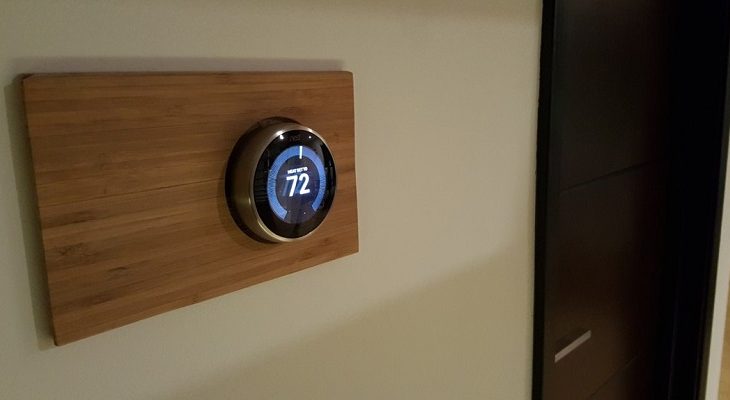Best Location for a Thermostat in a House
In times of antiquity, it was unheard of to have a house without a fireplace due to its importance in keeping the inhabitants warm during the winter. In modern times, you will find most houses with a strategically located thermostat to regulate the temperature in both cold and hot seasons.
This discusses the best location for a thermostat to achieve maximum efficiency from its use.
Common Thermostat Placement Problems
A thermostat’s location greatly influences how much electricity it will consume. Any location that presents the thermostat with a false temperature condition will cause it to supply unnecessary heating or cooling.
Placing your smart thermostat near doors and windows will make it supply more heating due to the continuous cooler air coming from outside the house. On the other hand, placing a thermostat in the kitchen or a room that takes direct sunlight will surely lead to a supply of needless cool air as a result of the oversupply of hot air at these locations.
What Is the Best Location for a Thermostat in a House
The most ideal location for a thermostat is one that optimizes heating or cooling according to the needs of the house occupants.
This should be a location that is considered central in the house, probably the living room. It should be a room often used by the house inhabitants, and one in which the temperature requirement is near “room temperature”.
What Is the Correct Height to Mount a Thermostat?
After all the considerations to maximize thermostat utilization, it would be impractical to place a thermostat where children can reach it as the will “experiment” with it. An ideal location to install a thermostat is too high for children but comfortable for adults.
It should be easily found and not behind other household items like shelves or wall mountings. It should also be away from areas discussed earlier (kitchen, direct sunlight, doors, windows, etc.)
Can a Thermostat Be Moved?
Yes. You may feel that the heating or cooling is not balanced within the house, thus necessitating the movement of the thermostat. As long as the movement is minimal and does not require extensive re-wiring, installing a thermostat in a better location can be a do-it-yourself not needing an HVAC specialist. Always, disconnect power when opening the equipment panel of a thermostat and rewiring it.
Can a Thermostat Location Influence Bills?
As discussed earlier, the thermostat location can greatly influence electricity consumption. A poorly installed thermostat can draw more power than is needed when undue influence on its operation is caused by poor location. For example, a thermostat placed on an exterior wall will cause the thermostat to match the temperature requirement of that wall.
Generally, any area with extremes of temperature is not suitable for thermostat installation. It is therefore advisable to install a thermostat at a location that maximizes its functionality.
Place the thermostat at locations that are away from room openings, a heat source, air vents, and exterior walls. The ideal location for your thermostat on interior walls, at elbow height, and in a room where the temperature control is needed most.
Best Location for a Thermostat in a Two-Story House
When selecting the best location for a thermostat in a two-story house, the guiding factor is air movement. Since hot air rises, it is best to use a lower story thermostat to regulate the temperature of both stories when in need of hot air.
The reverse will work when there is a need for cool air, whereby the upper story thermostat will regulate temperature at its location as well as draw hot air there.
Where you place a thermostat in a house can determine the stress levels of the occupants. High energy bills and incorrect temperatures are enough reasons to inconvenience your stay in the house. It only takes proper placement, which you also get from a professional contractor, to eliminate all the problems that arise from installing a thermostat at the wrong spot.
